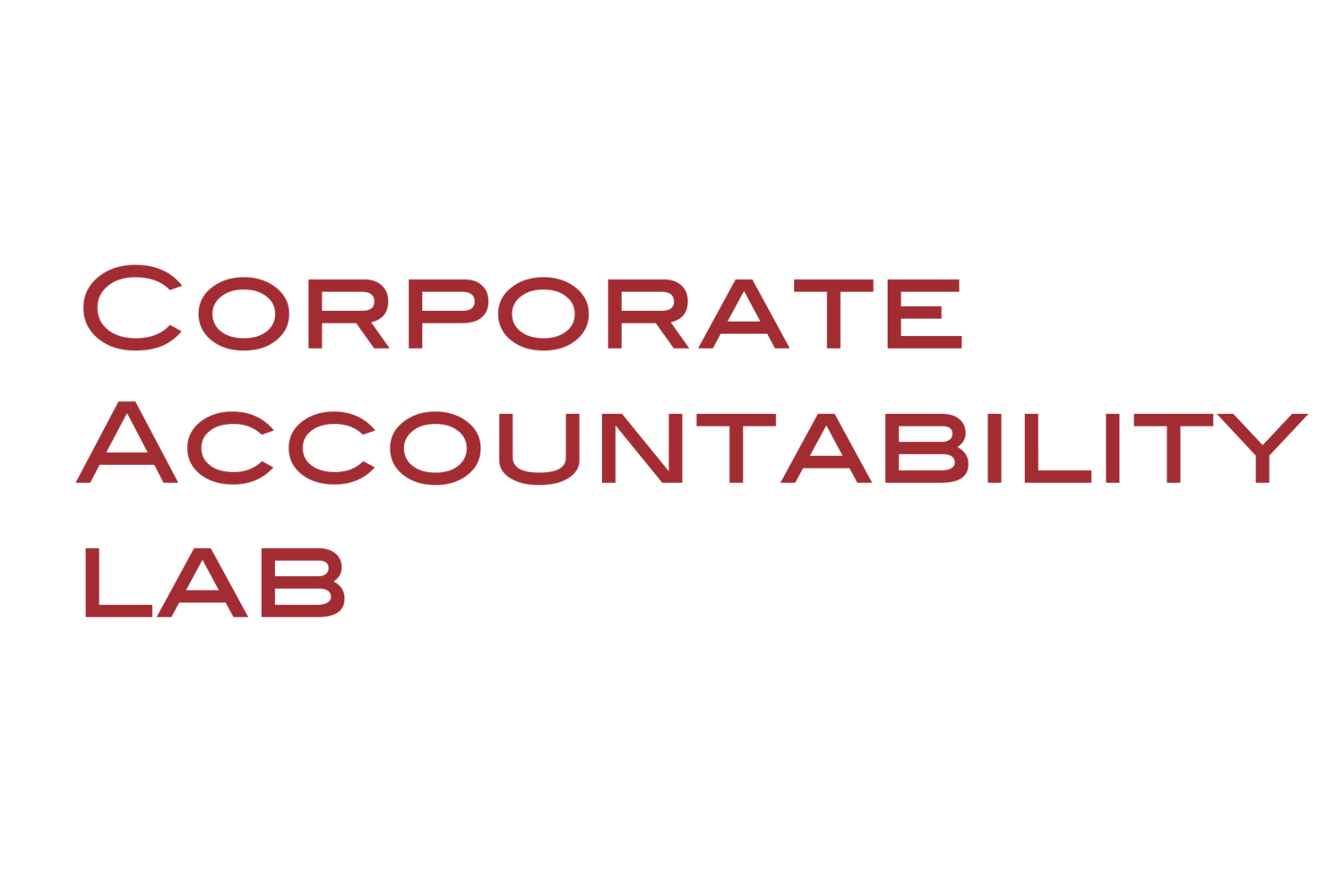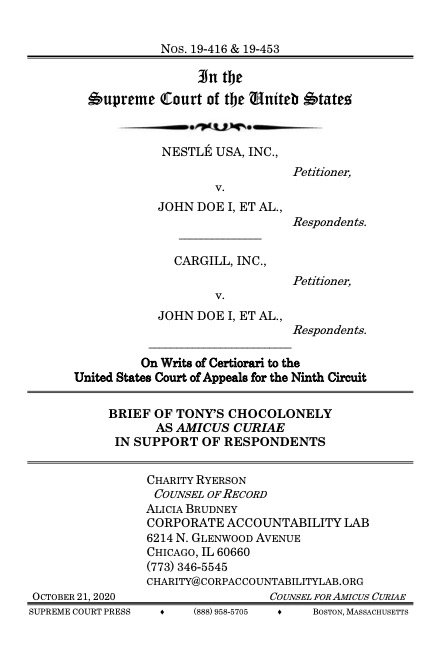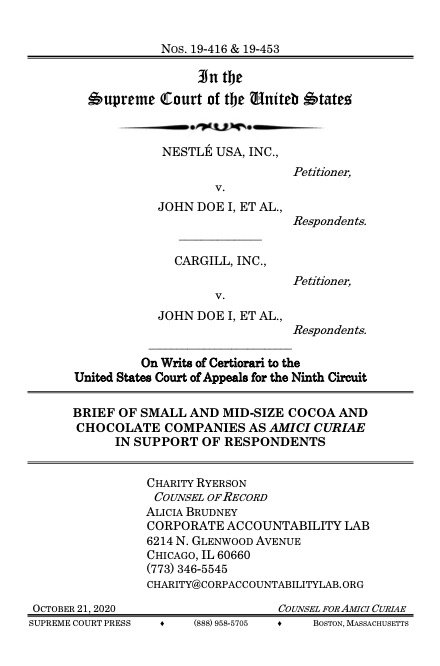Nestle Amicus Briefs
October 2020
Corporate Accountability Lab filed two amicus briefs in support of Respondents in the Nestle v. Doe case before the US Supreme Court, both about corporate liability under the Alien Tort Statute (ATS). CAL filed the two briefs on behalf of nineteen cocoa and chocolate companies that have structured their companies so that they source only slave-free cocoa. (One brief was filed on behalf of eighteen cocoa and chocolate companies and the other on behalf of a Dutch chocolate company, Tony’s Chocolonely.) All nineteen companies argued that it is unethical for companies to profit from cocoa produced with forced child labor, and that corporate liability for human rights abuses is essential for a fair and equitable economy.
Passed in 1789 by the First Congress, the ATS gives federal courts jurisdiction over tort claims, including for abuses of human rights brought by non-US citizens. Over the last thirty years, advocates and victims of human rights abuses overseas have sued private individuals, government actors, and powerful companies under the ATS. The statute’s applicability to transnational cases of corporate human rights abuse has been drastically narrowed over the years. Nestlé and Cargill, two of the most powerful corporate actors in the United States (and the world), argued that, unlike natural persons, they should be exempt from ATS liability; and that if they are not exempted by their corporate nature, that aiding and abetting international law violations from their US headquarters should not be enough to impose liability on them.
The case was decided in June 2021. The Supreme Court reversed the Ninth Circuit ruling that had allowed the case to proceed, and remanded it to the trial court. The Supreme Court’s majority opinion found that the plaintiffs (former forced child laborers) had not alleged enough domestic conduct by the defendants (Nestlé USA and Cargill) to sufficiently link the case to the United States.
For more information on the briefs, see this related blog post. For more information on the Supreme Court’s decision in this case, see this blog or watch our decision debrief with the plaintiffs’ attorneys.


